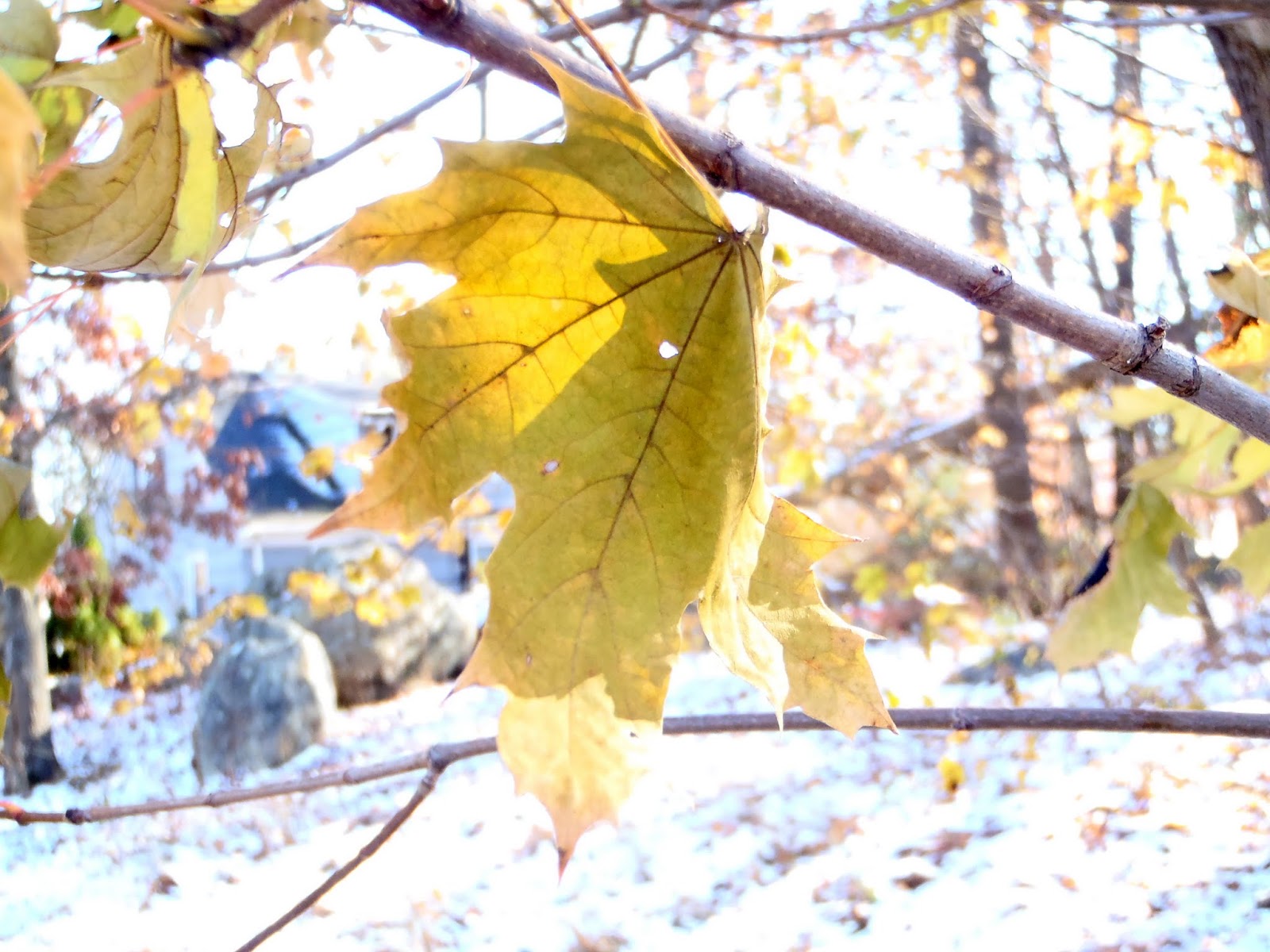I first noticed a little scrubby group of Norway maples on October 18th: many leaves had black splotches, and some of these black splotches had holes in the middle. "Huh," I thought, "some sort of fungal disease." It looked as though it was an infection spread by spores: one would land on a leaf, invade its tissues, and then proceed to spread outward in a widening circle. I looked for it elsewhere, but found it only on a few leaves of the big Norway maple in my own backyard. Since it seemed to be very local, and since I'm not very fond of alien invasives anyway, I gave it little further thought.
But a few weeks ago I realized that, as the rest of the local Norway maples finished dropping their leaves, this little cluster still had most of its leaves; but, these leaves, though still green, had died, dried out and shrivelled up right on the twigs. As I wondered whether this was caused by the fungal disease, I noticed that a lot of the dead leaves were unmarked by the fungus.
A few minutes with a search engine brings up Tar Leaf Spot of Maple, which this resembles, except that tar leaf spot causes premature leaf drop--the opposite of the situation here. Also, it seems to be a local infection--limited to individual spots on individual leaves--rather than the sort of systemic infection that might affect leaves elsewhere on the tree. And none of the diseases I saw online mention leaves failing to drop. Weird.
What's this? (11/18)
A few spots on our own tree.
The scrubby patch consists of perhaps a dozen saplings (the largest a dozen
or so feet tall) on a neglected property line, along with one tree about a foot
in diameter that still has its lower leaves. (11/23)
But a few weeks ago I realized that, as the rest of the local Norway maples finished dropping their leaves, this little cluster still had most of its leaves; but, these leaves, though still green, had died, dried out and shrivelled up right on the twigs. As I wondered whether this was caused by the fungal disease, I noticed that a lot of the dead leaves were unmarked by the fungus.
Some leaves are infected, many are not, but all are dried out and dead.
A few minutes with a search engine brings up Tar Leaf Spot of Maple, which this resembles, except that tar leaf spot causes premature leaf drop--the opposite of the situation here. Also, it seems to be a local infection--limited to individual spots on individual leaves--rather than the sort of systemic infection that might affect leaves elsewhere on the tree. And none of the diseases I saw online mention leaves failing to drop. Weird.
.JPG)


































.JPG)











.JPG)











